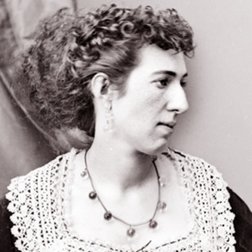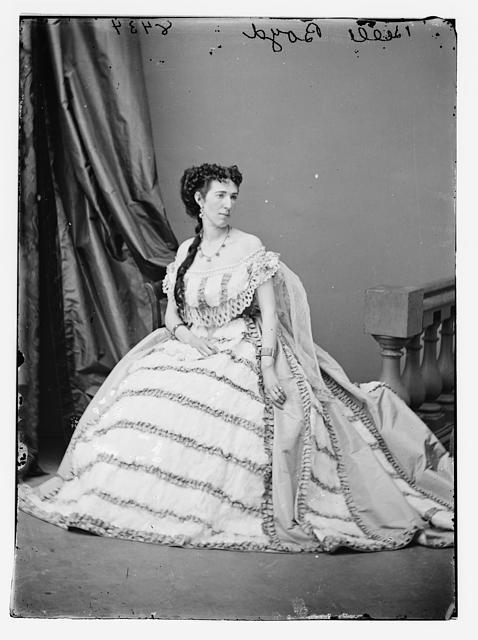Unlike many of the families in the area of Virginia the Boyds lived (which was so against secession that it broke from Virginia to create the Union-loyal state of West Virginia), the Boyds had deep southern roots and supported the cause of the Confederacy. Belle’s father volunteered for a Virginia infantry regiment which was commanded by Colonel Thomas Jackson before he had earned his famous nickname for standing like a stone wall. After a skirmish between Confederate and Union forces at the Battle of Falling Waters, just 8 1/2 miles north of the Boyds’ home, Union forces came through Martinsburg. One of the Federal soldiers entered the Boyd home and confronted Belle’s mother. Belle would not tolerate the disrespectful and harassing language and behavior. She shot the man. The Union officer sent to investigate determined that Belle had been in the right and she escaped punishment. Belle was not considered beautiful, but because she was tall, vivacious, well-dressed and young, she was able to charm unsuspecting Union officers into revealing information which she would then pass to the Confederates through her neighbor or her slave. Eventually, she became an official operative for Generals PGT Beauregard and Stonewall Jackson. In May 1862, after having been detained by Union forces, she was at her aunt’s home near Fort Royal. The home was now the headquarters of Union General James Shields, who was on a mission to whip Stonewall Jackson in the Shenandoah Valley. The General called a Council of War--a meeting with his subordinates to set a course of action--held in her aunt’s drawing room. On the second floor, directly above the drawing room was a closet. And in the floor of the closet was a hole. Belle gathered her intelligence while in the cramped closet, then when the Council ended at 1 a.m., she set out for Confederate lines on horseback, her pockets holding cast off passes for Confederate heading south. The papers fooled the sentries, and she was able to get her information to Confederate cavalryman Colonel Turner Ashby. On May 23rd, Jackson’s men approached Front Royal. Belle had more valuable information that she believed could ensure a victory for the Confederate forces. She knew the size and disposition of Union forces in the lower (northern) Shenandoah Valley. Though she approached several men who had professed Confederate sympathies to carry the information to Jackson, none agreed to do so. So she went herself. Belle’s escape from the Union lines was harrowing, with Federal picket fire hitting the ground near enough to spray dirt in her eyes and other Union bullets tearing holes in her dress. When she was safely behind Confederate lines she was greeted by Jackson’s aide Henry Kyd Douglass who recognized her and took her notes to Jackson himself. Jackson was so grateful for her daring that he wrote her a note of thanks: May 23d 1862 Miss Belle Boyd, I thank you for myself and for the army, for the immense service that you have rendered your country today. Hastily I am your friend, T.J. Jackson, O.S.A Only two months later, Belle was captured and imprisoned at Old Capitol Prison on Washington, D.C. She spent a month there before being exchanged. She went back to her career in espionage and again, she was capture and imprisoned, this time for five months. After her release the second time, she was banished to the south, but instead of retiring, she simply decided on a change of base, and set sail for England. While enroute, her ship was stopped by the Union navy and again, she was arrested as a spy. Belle went on to captivate one of her Union captors, Samuel Hardinge, who she hoped to convert to the Confederate cause. Whether his loyalty to his country was compromised or simply his heart, he did serve time for giving aide to Belle.
References and Further Reading
Maria "Belle" Boyd Belle Boyd Biography Belle Boyd in Camp and Prison by Belle Boyd
0 Comments
Leave a Reply. |
AuthorToni is a wife, mom and history buff who loves bringing the Civil War to life for family members of all ages. Archives
July 2018
Categories
All
|


 RSS Feed
RSS Feed